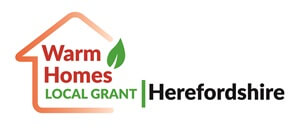Energy saving improvements under the Warm Homes Local Grant
 Every home will be individually surveyed and assessed, to ensure that the most effective energy saving improvements are proposed.
Every home will be individually surveyed and assessed, to ensure that the most effective energy saving improvements are proposed.
The Warm Homes Local Grant scheme uses a number of different professionals to select the right improvements to install in your property.
To start with they will look at whether the fabric of your home needs improvements - such as replacing single glazed windows with double glazed windows or installing insulation - before looking at changing or improving heating systems.
The plan for your home will provide the best blend of improvements to give your home the greatest efficiency boost.
Types of energy saving improvement
You may be recommended some of these energy saving improvements and many homes will be recommended to receive more than one.
The Centre for Sustainable Energy have also produced a number of downloadable fact sheets, on topics such as air source heat pumps, solar PV, ventilation and various types of insulation.
These are some of the improvements that may be recommended:
Air source heat pump
An air source heat pump is an energy efficient alternative to a gas or oil boiler. An air source heat pump transfers heat from the outside air to the water in your central heating system (even when it feels cold outside). This heats rooms in your home via radiators or underfloor heating. It can also heat water stored in a hot water cylinder for your hot taps, showers, and baths.
Cavity wall insulation
If your home was built since the 1930s, it is likely that the external walls are made of two 'skins' with a small gap between them. This means they are cavity walls and the gap between them can be filled with insulating material to slow the rate of heat loss to the outside.
Door undercut
This is where you have a 10mm gap between the bottom of the door and the bottom of the door frame. It will increase air circulation between rooms when the door is closed, helping maintain a balanced temperature in the property, and control moisture levels. This is important to avoid damp, condensation and mould.
Double glazed windows
Windows that have two panes of glass with a gap between them. This reduces heat loss.
Draught-proofing
Blocking gaps in your home's construction to keep warm air in and cold air out.
External wall insulation
External wall insulation is installed on the outside walls of a building. It helps make the building more energy efficient by reducing heat loss.
Insulation
A layer of material that slows down heat loss. It's the first step in keeping your home warmer.
Loft insulation
Insulation installed in a loft, which helps slow heat loss through the top of your home.
Room in roof insulation
This is insulation in rooms that are in the roof space, for example a loft room.
Solar PV panels
Energy from the sun can be converted into electricity using solar photovoltaic panels, known as 'solar PV', installed on your roof. This electricity can power your home and reduce your energy costs.
Ventilation improvements
Ventilation is essential to keep your home healthy, allow some fresh air inside, and reduce issues such as damp and mould. In order to comply with national standards (PAS2035) there is a requirement not to make the building airtight. For example, loft Insulation may require a series of vents.
As part of this scheme, any insulation improvements, including new windows or doors, will require the installation of ventilation which will be included in the funding. This may include replacing existing bathroom or kitchen fans.
These videos from Aereco explain more about why we need ventilation and the types of ventilation.
If you live in a listed or historic building
Historic England provides information about installing heat pumps and solar panels in older buildings.
The Green Heritage Homes website has videos about making listed homes more energy efficient.
We will advise what improvements your home should get
You won't be able to choose your own energy saving improvements, the professional Retrofit Coordinators will choose the most appropriate upgrades based on surveys of your home. These improvements will be unique to your home, and designed to fit with your life and the way you use your space.
You do not have to go ahead with the proposed improvements
You can choose to decline the offer if you do not wish to have the proposed improvements.
No work will be carried out in your home without your agreement, and you will have the opportunity to ask any questions you have about the proposed improvements.
All work is fully funded
You will not have to pay anything for the improvements. If you rent your home your landlord may have to make a contribution, but at as a homeowner you will never have to pay anything towards these improvements.
The external appearance of your home may change
Some upgrades (like external wall insulation) would change the outward appearance of your home. Industry standards require the team to treat historic or traditional properties with sensitivity and make sure they do not lose their character. If your home is listed, the Warm Homes team will arrange the necessary permissions.
Warm Homes Local Grant contact details
Contact the Warm Homes team if you have any queries about the Warm Homes Local Grant.
Send Email